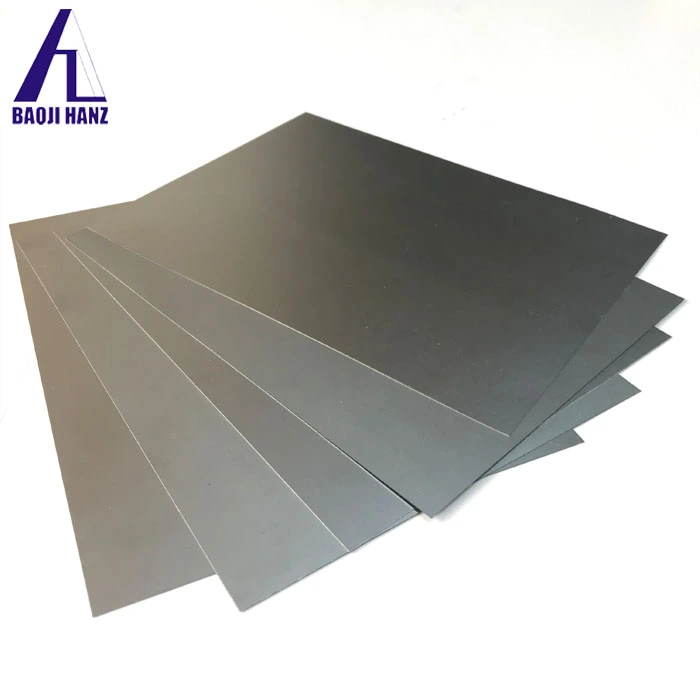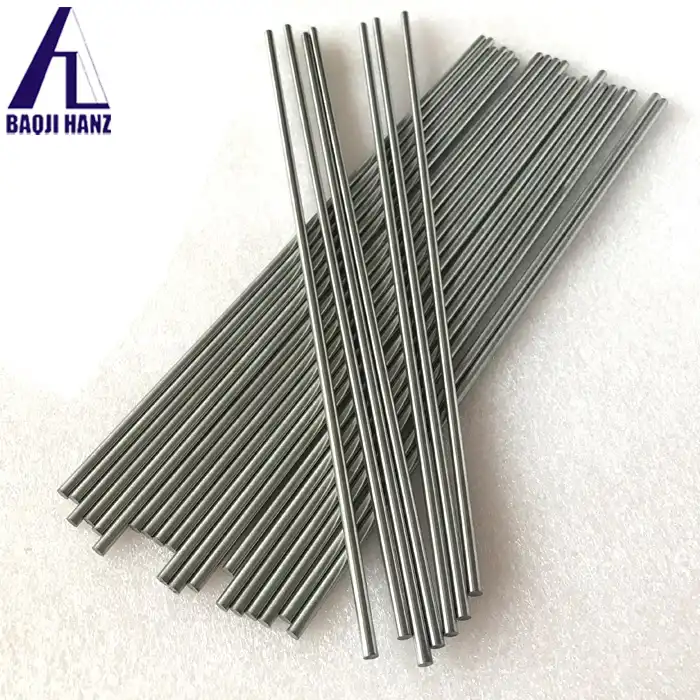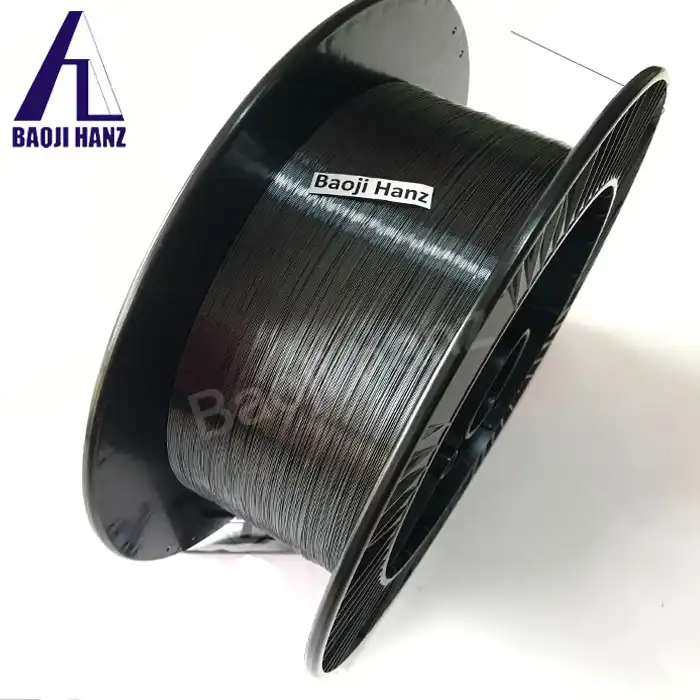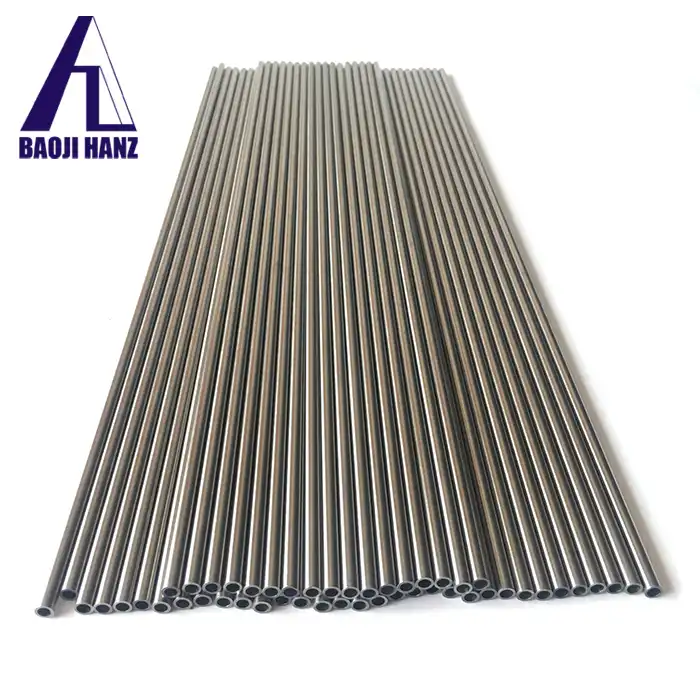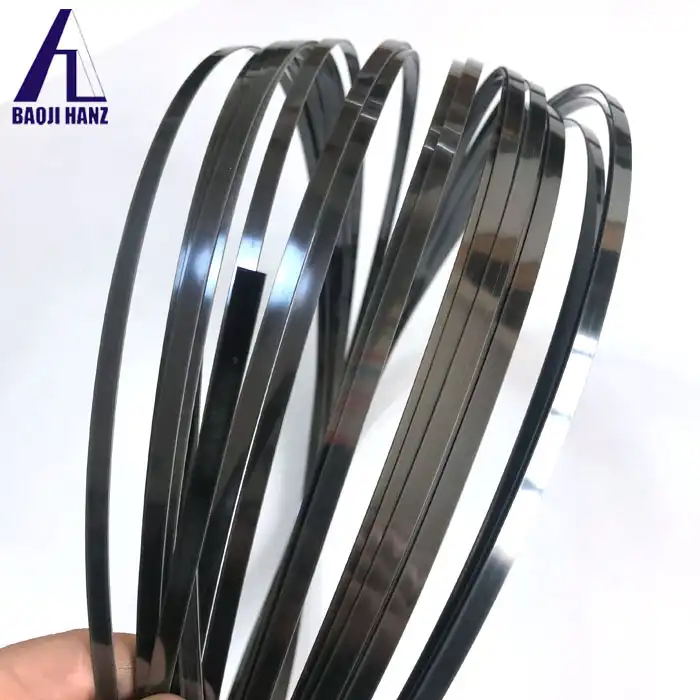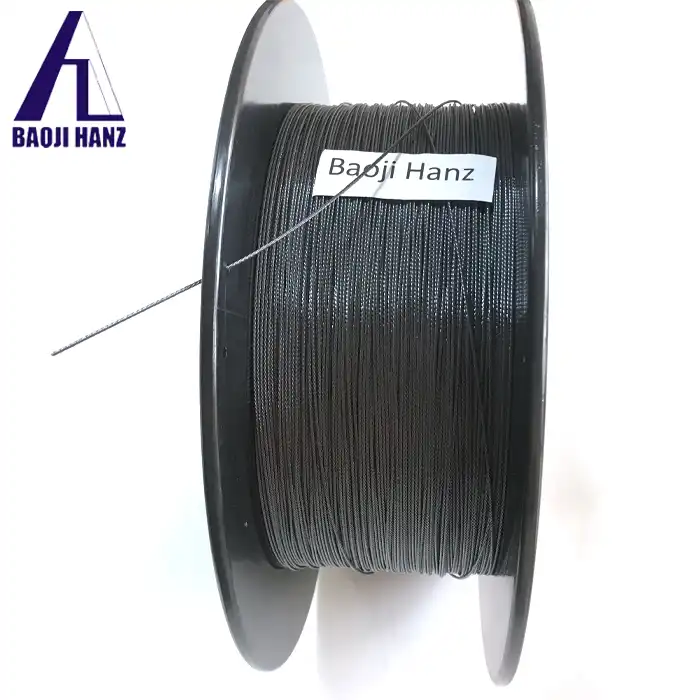Are there any risks associated with using nitinol guide wires?
2025-01-24 21:27:59
Nitinol guide wires have revolutionized many medical procedures, offering unique properties that make them invaluable in minimally invasive surgeries and interventions. These super elastic nitinol guide wires are known for their flexibility, shape memory, and biocompatibility. However, as with any medical device, it's crucial to understand the potential risks associated with their use. This blog explores the various aspects of nitinol guide wire safety, examining both the benefits and potential hazards. We'll delve into the manufacturing process, material properties, and clinical applications to provide a comprehensive overview of the risks and how they are mitigated in modern medical practice.
Understanding Nitinol Guide Wires
Composition and Properties of Nitinol
Nitinol, an alloy of nickel and titanium, possesses exceptional properties that make it highly suited for medical applications. One of its most notable features is its superelasticity, which allows it to undergo significant deformation and return to its original shape once the stress is removed. This is especially useful in guide wires, where it enables smooth navigation through complex and tortuous blood vessels without permanent deformation. Nitinol also exhibits a shape memory effect, meaning it can "remember" a predetermined shape and revert to it when heated beyond a certain temperature. This property is utilized in medical devices such as stents and orthodontic wires. Additionally, nitinol is highly biocompatible, offering excellent resistance to corrosion within the body and minimal risk of allergic reactions. These combined properties make nitinol an ideal choice for guide wires and other devices used in minimally invasive medical procedures.
Manufacturing Process of Nitinol Guide Wires
The production of super elastic nitinol guide wires involves a complex process that requires precision and expertise. Initially, the nitinol alloy is melted and cast into ingots. These ingots are then hot-worked and cold-drawn into wires of varying diameters.The wire undergoes a series of heat treatments to impart the desired superelastic properties. This process, known as shape setting, involves heating the wire to high temperatures and then rapidly cooling it. The exact temperatures and durations are carefully controlled to achieve the optimal balance of flexibility and strength.Surface treatments are applied to enhance the guide wire's performance and safety. These may include electrolytic polishing to smooth the surface, reducing friction during use, and coating with hydrophilic or hydrophobic materials to improve lubricity and reduce the risk of thrombosis.
Applications in Medical Procedures
Nitinol guide wires find applications in a wide array of medical procedures, particularly in interventional radiology and cardiology. They are instrumental in catheterization procedures, allowing physicians to navigate through blood vessels to reach target areas for diagnosis or treatment.In neurovascular interventions, super elastic nitinol guide wires are used to access and treat aneurysms and other vascular malformations in the brain. Their flexibility and kink resistance make them ideal for navigating the delicate and tortuous cerebral vasculature.Peripheral vascular procedures also benefit from nitinol guide wires. They are used in angioplasty and stenting procedures to treat peripheral artery disease, providing the necessary support and maneuverability to reach and treat blocked arteries in the legs and other extremities.
Potential Risks Associated with Nitinol Guide Wires
Mechanical Risks
While nitinol guide wires are designed for flexibility and durability, they are not immune to mechanical failures. One potential risk is wire fracture, which can occur if the wire is subjected to excessive stress or repeated bending beyond its design limits. Fractures can lead to complications such as vessel perforation or embolization of wire fragments.Another mechanical risk is kinking or deformation of the wire. Although nitinol is superelastic, extreme force or improper handling can cause permanent deformation, potentially compromising the wire's performance and safety during a procedure.Surface defects, while rare due to stringent manufacturing processes, can also pose risks. Microscopic imperfections on the wire's surface could potentially damage vessel walls or contribute to thrombus formation.
Biological Risks
Despite nitinol's generally excellent biocompatibility, there are some biological risks to consider. Nickel, a component of nitinol, is known to cause allergic reactions in some individuals. While the nickel in nitinol is tightly bound within the alloy's crystal structure, there is a theoretical risk of nickel ion release, particularly if the wire's surface is compromised.Thrombogenicity is another biological concern. Although nitinol guide wires are typically coated to reduce this risk, there is still a potential for thrombus formation on the wire's surface, especially during prolonged procedures or in patients with hypercoagulable states.Infection, while not specific to nitinol guide wires, is a risk inherent to any invasive medical procedure. The introduction of any foreign object into the body carries a risk of bacterial contamination and subsequent infection.
Procedural Risks
The use of super elastic nitinol guide wires requires skill and experience. Improper handling or navigation can lead to vessel trauma, including dissection or perforation. While the flexibility of nitinol can mitigate some of these risks, it does not eliminate them entirely.There is also a risk of guide wire entrapment, where the wire becomes stuck or wedged within the vasculature. This can occur in heavily calcified vessels or complex anatomical structures and may necessitate additional interventions to retrieve the wire safely.Embolization of coating material is another potential procedural risk. If the hydrophilic or hydrophobic coatings on the guide wire are damaged or improperly applied, small particles could potentially detach and embolize, potentially causing ischemic complications.
Mitigating Risks and Ensuring Safety
Quality Control in Manufacturing
Rigorous quality control measures are essential in mitigating the risks associated with nitinol guide wires. Manufacturers employ sophisticated testing methods to ensure the consistency and reliability of their products. These include fatigue testing to simulate repeated use, tensile strength testing to assess mechanical properties, and surface analysis to detect any imperfections.Advanced imaging techniques, such as electron microscopy and X-ray diffraction, are used to examine the microstructure of the nitinol alloy. This helps ensure that the material properties are uniform and meet the required specifications for superelasticity and shape memory.Cleanliness and sterility are paramount in the production of medical-grade nitinol guide wires. Manufacturers adhere to strict cleanroom protocols and sterilization procedures to minimize the risk of contamination and ensure the safety of the final product.
Clinical Best Practices
Proper training and education of healthcare professionals are crucial in minimizing the risks associated with nitinol guide wire use. Clinicians should be well-versed in the unique properties of nitinol and the specific handling requirements of super elastic guide wires.Adherence to established clinical guidelines and protocols is essential. This includes proper patient selection, considering factors such as vessel anatomy and potential allergies, as well as following recommended techniques for wire insertion and manipulation.Regular monitoring during procedures is vital. Fluoroscopic guidance allows for real-time visualization of the guide wire's position and movement, enabling early detection and prevention of potential complications.
Ongoing Research and Development
The field of nitinol guide wire technology is continually evolving. Ongoing research focuses on improving the material properties of nitinol, developing new surface coatings to enhance biocompatibility and reduce thrombogenicity, and exploring novel manufacturing techniques to further enhance safety and performance.Innovations in guide wire design, such as composite wires combining nitinol with other materials, are being explored to address specific clinical challenges and further mitigate risks.Post-market surveillance and clinical studies play a crucial role in identifying long-term safety profiles and potential risks associated with nitinol guide wires. This continuous feedback loop informs future developments and improvements in both product design and clinical practice.
Conclusion
While super elastic nitinol guide wires offer significant advantages in medical procedures, they are not without risks. However, through rigorous manufacturing processes, proper clinical practices, and ongoing research, these risks can be effectively managed. The benefits of nitinol guide wires in enabling minimally invasive procedures continue to outweigh the potential risks when used appropriately. If you want to get more information about this product, you can contact us at: baojihanz-niti@hanztech.cn.
Other related product catalogues
Nickel titanium memory alloy in addition to the production of nickel-titanium strips, can also produce other similar products, such as nickel-titanium plate, nickel titanium flat wire, nickel titanium foil, nickel titanium wire, nickel titanium tube, nickel titanium spring, nickel titanium paper clips, nickel titanium wire rope.
|
|
|
|
|
|
|
|
References
1. Johnson, A. D., & Schlüter, K. (2018). Nitinol: The material of choice for medical devices? Medical Device Technology, 29(3), 14-17.
2. Pelton, A. R., Dicello, J., & Miyazaki, S. (2000). Optimisation of processing and properties of medical grade Nitinol wire. Minimally Invasive Therapy & Allied Technologies, 9(2), 107-118.
3. Duerig, T., Pelton, A., & Stöckel, D. (1999). An overview of nitinol medical applications. Materials Science and Engineering: A, 273, 149-160.
4. Shabalovskaya, S. A. (2002). Surface, corrosion and biocompatibility aspects of Nitinol as an implant material. Bio-medical materials and engineering, 12(1), 69-109.
5. Trepanier, C., Tabrizian, M., Yahia, L. H., Bilodeau, L., & Piron, D. L. (1998). Effect of modification of oxide layer on NiTi stent corrosion resistance. Journal of Biomedical Materials Research, 43(4), 433-440.
6. Zahn, R., Schiele, R., Sievert, H., Hauptmann, K. E., Gottwik, M., & Senges, J. (2000). Intracoronary stenting and angiographic results: strut thickness effect on restenosis outcome (ISAR-STEREO) trial. Journal of the American College of Cardiology, 36(7), 2168-2173.

